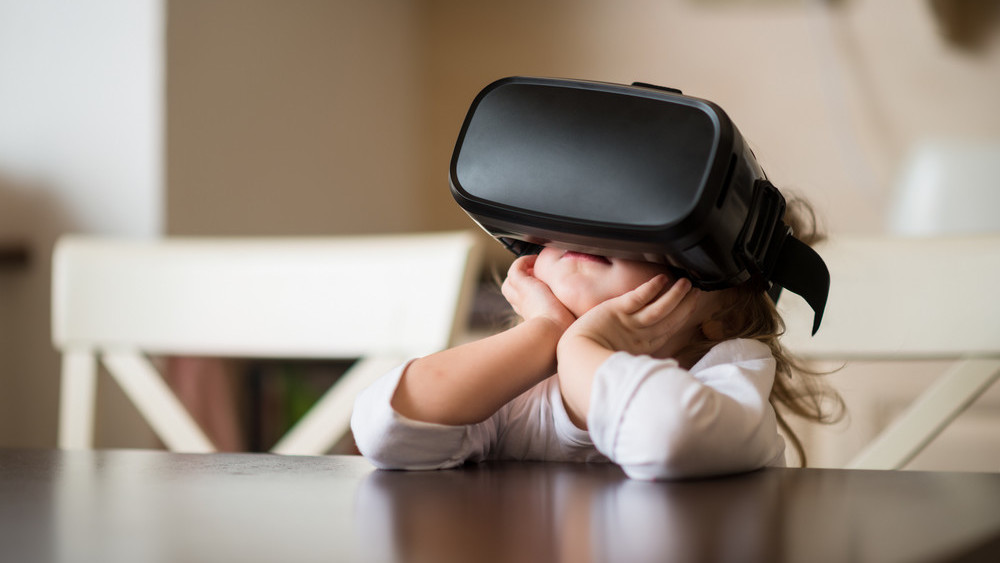
Virtual reality is not like anything that’s come before it. This is something that you need to remember.
As the moving parts of the virtual reality hype machine have come together into a churning monster, comparisons have been made to failed technology trends of the past:
- It’s going to be like 3D TV.
- It’s too expensive.
- It’s not good enough.
- We’re not ready for it.
While almost all of these criticisms have some tangential reality, it’s becoming harder and harder to make any comparisons between virtual reality and “what came before.” Up until a few months ago, it was a showcased technology in bright convention halls and spotlight stages. For all intents and purposes, VR hype has always been behind the 8-ball.
The only realistic way to show it off, to share the experience, is for people to immerse themselves fully into what it offers. If you haven’t strapped on a goofy-looking pair of goggles, you just can’t know how good it is.
Well, the goggles are looking a lot more sleek, and the first retail releases of VR as we know it have begun landing in customers’ homes. It hasn’t been the smoothest rollout, but based on PR snippets and responses to frustrated early-backers, the struggles to fulfill orders have been due to overwhelming demand.
VR is exceeding expectations, already
The time has come to start taking this technology a lot more seriously.
While skeptics will continue to strain for those old contrasts with past tech failure, some of the biggest names in tech innovation (with the most financial and intellectual resources to throw at it) continue to remind us that this will be one of the biggest tech breakthroughs in decades.
The recent showcase of ideas at F8 may seem far-fetched, now, but the same could be said for Oculus Rift ending up in consumers’ homes at a borderline reasonable price point, even a year ago.
Mark Zuckerberg, CEO of Facebook, demonstrates the Oculus Rift headset. In September of 2015 Facebook bought Oculus Rift for $2 billion in a vote of confidence for virtual reality’s future.

For as many applications as I can see VR being put to once it’s a few iterations further into its development and testing cycle, there are quite a few well-justified reasons for me to remain skeptical. From mobile apps to console gaming systems to virtual conferencing, VR holds the potential to change how we interact with every piece of current technology
First and foremost is my desire to see VR pull away from its dependence on the games industry. Even though there’s a huge amount of financial muscle backing the development and exploration of VR’s potential, it still exists as a niche gamer technology to a lot of the public.
One can hardly blame this perspective, since almost all of the public relations that have lengthy reach tout the technology’s ties to the games industry.
This isn’t inherently a bad thing, but by coincidence, it’s extremely limiting.
Considering the high price points that currently stand as a barrier to entry (and aren’t likely to vanish anytime soon), it’s going to be important that the technology expand its reach to different areas of public consciousness, where it can also make a real impact. I’d argue that the actual potential behind VR goes way beyond entertainment value, and even though this is a widely shared opinion, current VR tech hasn’t done much to back that up.
On July 21st, 2014, Facebook formally acquired Oculus Rift in a $2 billion deal. If there was any question as to the faithful intent that the social media giant had in the future of virtual reality, this squished it flat.
Though it’s absent any branding from Facebook, that very telling business deal stands as one of the largest testaments that VR needs to perform.
It’s also a sign that it needs to make quick moves to include more spheres of culture than games alone.
At the recent F8 conference, two Facebook developers put on a jaw-dropping show.
Separated by miles, they interacted in a “360-degree selfie” that demonstrated just how intimate social interaction can remain in virtual reality, a beefed up version of using Kik online or another messaging service. They addressed each other casually, carried on an average conversation (complete with facial movements and hand gestures), and even drew digital adornments for each other to wear.
It’s funny that a demonstration meant to reveal the unlimited potential of virtual reality reaffirmed just how limited the technology currently is. A behind-the-scenes glance at the elaborate camera setup necessary to capture the scene was like a peek at the man behind the curtain; impossibly separate from the expectation currently being established by the slick (if still somewhat brick-like) headpieces that current VR tech is built upon.
It’s a sign of the times, and also a sign of the future.
More than that, VR as it exists for consumers today will mesmerize as quickly as it reminds everyone of what needs to change before it stands even the slightest chance of becoming mainstream.
Price

The price point places it in the field of early investors and, even among those, people with enough money to afford everything required in a VR setup. The headsets currently available to consumers — the Oculus Rift and the HTC Vive — carry $599 and $799 price tags, respectively.
Further compounding the already steep entry cost is the technical hurdle you’ll need to overcome in order to run VR software on your home computer.
Whether or not your rig has a dedicated GPU isn’t even a question; the actual question is if it even meets the minimum requirements — a NVIDIA GTX 970 or an AMD R9 390. You’ll also need a hefty CPU, and more on board storage for the increased number of assets that virtual reality programs will need to render.
For a technology that has yet to prove that it’s worth its salt, that’s a great big shopping list.
Style

It’s not a slouch when it comes to setup, either, and if you want your VR experience to extend beyond your computer desk (currently only available with the HTC Vive, but coming soon for Oculus), you’re going to need several feet of free real estate in your entertainment space.
That is, if you don’t fancy the idea of bumping into your furniture or stepping on the cat.
Comfort

Those few exceptions, however, have been exceptions for more than a year.
Nausea takes the cake as the foremost concern that I have for the VR experience, and even though many users claim to have their “VR legs” under them after only a short time spent with a headset on, a few still complain of the spatial discomfort that comes from spending any prolonged amount of time existing in a virtual environment.
The second concern is also a bit predictable, and it’s going to give naysayers and skeptics another reason to reach for a 3D TV comparison — glasses. While the Vive and the Oculus are adjustable enough to fit any size of head, those of us burdened with spectacles are sporting all variety of sizes and shapes of lenses. Some have said that the VR headsets are outright painful to wear, while others worry that their glasses are going to scratch the surely expensive lenses inside of the headset itself.
These are problems that hardware developers are going to have to solve for. With the already hefty shopping list required to get one’s home setup “VR ready,” contact lenses or eye surgery aren’t justifiable additions.
Accessibility

Do we need to talk about Google Glass, or is it enough to just say, “Remember Google Glass?”
While it isn’t a particularly flattering comparison, it’s an apt one. VR has proven its capability. Now, it needs to prove that it deserves a place in the average household, and not just the boutique gaming den.
Get the TNW newsletter
Get the most important tech news in your inbox each week.




